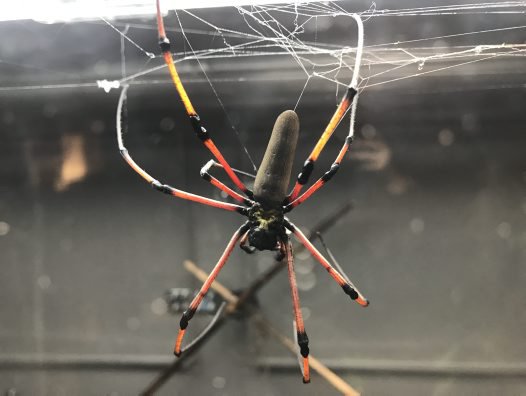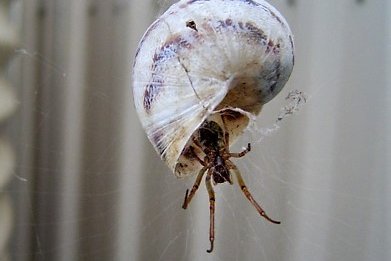Where have all the spiders gone?
You may be wondering what's happened to that big fat spider whose web you used to walk into around the back of the clothesline. Well I hate to come over all Charlotte's Web on you, but I'm afraid it's probably dead.
Most araneomorph spiders (the typical web-building spiders and huntsman spiders) 'live fast and die young'. Many breed towards the end of their first years, and then never get to meet their offspring (which might be a good thing, as some mothers would probably eat them otherwise).

© Australian Museum
The 'elderly decline' of these spiders is perhaps most notible in the orb-weaving species. Garden orb-web weavers such as Eriophora transmarina normally build, tear down and eat their webs each night, but around this time of year they will start leaving them up permanently. Golden-orb weavers (Nephila sp.) which always leave their webs up, will be getting less fussy about repairing any holes. And the webs of St Andrew's Cross Spiders, Argiope keyserlingi, normally so taut and symmetrical, will begin to sag.
These are all signs that winter is upon us, and the spiders will soon disappear (though perhaps not as quickly as they once did, thanks to global warming). They no longer seem to have the energy or the silk to make repairs, but may well be trying to catch a few of the dwindling insects still about to provide enough energy for a last egg sac.
In contrast, the more 'primitive' spider forms — the mygalomorphs such as funnel webs — live for many years and simply become less active in winter, many waiting out the cold weather, safe in their burrows.













